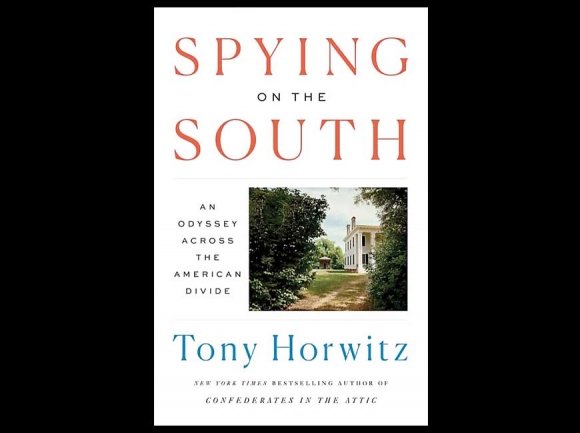Trying to define Appalachia and the South

Who speaks for Appalachia?
That is the question implicit in Appalachian Reckoning: A Region Responds to Hillbilly Elegy (West Virginia University Press, 2019, 421 pages). In this collection of essays, brief memoirs, and poems, editors Anthony Harkins and Meredith McCarroll bring together writers to address J.D. Vance’s bestselling memoir, Hillbilly Elegy: A Memoir of a Family and Culture in Crisis. Some of these writers attack Vance for acting as a spokesman for Appalachian America, a title Vance doesn’t claim, some defend him, and a few seem aggrieved or jealous because he has earned a big name and big bucks from his memoir.
Because I review Appalachian Reckoning for an upcoming issue of the Smoky Mountain Living magazine, I will offer no other comments here other than to say that the book sparked a question:
Who speaks for Appalachia?
Those of us even vaguely familiar with Appalachian literature can think of novelists, poets, and essayists whose words bring us pleasure and insight. Jim Wayne Miller, Fred Chappell, Wilma Dykeman, Wendell Berry, Thomas Wolfe, Ron Rash, the outlander Horace Kephart, Lewis Greene, Ila Yount: these and scores of others, some well-known authors, some less so, have delivered their work with the voice of their native territory. On none of them, however, would we bestow the crown of “spokesperson for Appalachia.”
For one thing, “Appalachia” itself resists precise definition. The Appalachian Mountains run from Canada to Alabama. The Appalachian Regional Commission narrows this territory to the mountains stretching from Southern New York to Alabama. If we’re talking culture instead of geography, that map once again shrinks, reduced to West Virginia, Southwestern Virginia, Eastern Kentucky and Tennessee, Western North Carolina, and North Georgia.
Related Items
Nor can any one person stand as a symbol for Appalachian cultural and history. Who would we pick? Daniel Boone? Jed Clampett of the Beverly Hillbillies? The Carter family from Bristol? Sequoyah? Ernest T. Bass of The Andy Griffith television show?
And what images does Appalachia bring to mind? Depression photographs of skinny kids in overalls? Corn bread? Coal mines? Country music? Moonshine? Dollywood? The tattooed crew on the vibrant streets of Asheville? The Biltmore House? Trailer parks? Mountain streams and hiking trails in the heart of the Smokies?
In his excellent online essay “What/Where/Who is Appalachia?” Joshua Wilkey examines such topics and concludes “Looking beyond offensive stereotypes, it becomes clear that there exists no single, monolithic Appalachian culture.” www.thisappalachialife.com/single-post/2017/04/27/whatwherewho-is-appalachia
Which also makes it clear that no one can claim to speak on behalf of that culture.
Enough of my venting. Let’s look at a book that explores the American South.
In Spying On The South: An Odyssey Across The American Divide (Penguin Press, 2019, 476 pages) Tony Horowitz, best known for his earlier book Confederates In The Attic, leaves his Massachusetts home to explore the American South. Here he follows in the footsteps of Frederick Law Olmsted, who before he won his fame as the designer of Central Park and, closer to home, the grounds of the Biltmore Estate, traveled the South as a correspondent in the years just before the Civil War. In relating Olmsted’s observations, Horowitz brings alive that long-ago era.
Intertwined with Olmsted’s thoughts on the antebellum South are Horowitz’s observations on the 21st century South. He reports encounters with dozens of people he meets on these travels, accompanied part of the time by a friend from Australia, Andrew Denton. He visits historic places like the Alamo and New Orleans’ French Quarter. He takes us into Bluegrass Kentucky, Cajun Louisiana, Natchez in Mississippi, and all over Texas. Horowitz is a fine writer with a knack for vivid observation, and he brings to life the people he meets and the places he visits.
Those talents notwithstanding, Horowitz and his approach to the South are often annoying, particularly in regard to working white Southerners. His sometimes snarky take on them, and that of his equally snarky friend Andrew, all too soon grow old. Here in this description of Kentuckians is one small example of many of these portraits: “The patrons at the diner oozed out of booths and stubbed cigarettes in their plates of grease and gravy.”
Really? Cigarettes? Horowitz must have found the last restaurant in the United States that still permits smoking.
This obsession with the South’s greasy food becomes a minor theme in the book. Andrew in particular whines about cholesterol and fatty foods, but neither man eats anywhere other than in country diners. Most towns of any size in the South feature upscale and ethnic restaurants — in Front Royal, Virginia, where I am writing these words, you’ll find cuisine from Italy, Nepal, China, Japan, and France — and even McDonald’s offers salads.
These visits to country restaurants reveal the prejudices Horowitz brings to his journey South. Occasionally, he is open about these judgments. On page 150, for example, he meets African-American Lillie Andrews of Franklin Avenue Baptist Church in New Orleans. After Andrews gives him a tour of some of the neighborhoods still damaged by Hurricane Katrina, Horowitz wonders about her “embrace of a white stranger, and the offer of a ride, which I doubted would happen to a black man wandering the city’s white-flight suburbs?”
Horowitz never stops to wonder what might have happened to him had he gone by himself into some of the black neighborhoods in New Orleans.
And the words with which Horowitz concludes his account of Lillie Andrews reveal an irony of which he is unaware. Speaking of blacks, whites, Asians, and Hispanics, Lillie says, “The media makes it seem like we’re far apart, that it’s all negative, but in the real world we’re less divided now … We are not going to allow anyone to tear us apart again.”
Including, we presume, Mr. Horowitz.
A final note: This year I have read several articles and two books, includ ing Spying On The South, in which journalists visit “flyover country,” meaning the great bulk of the United States, as if they were anthropologists reporting on exotic peoples in Kwaziland. These reveal less about the ignorance and supposed insularity of the American people, and much more about the bigotry of those observing them.
(Jeff Minick is a writer and teacher. This email address is being protected from spambots. You need JavaScript enabled to view it..)









